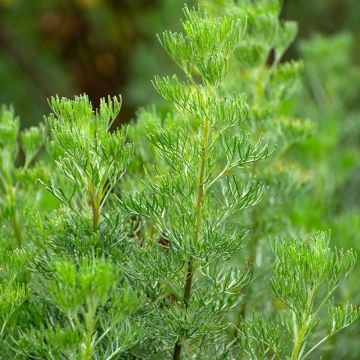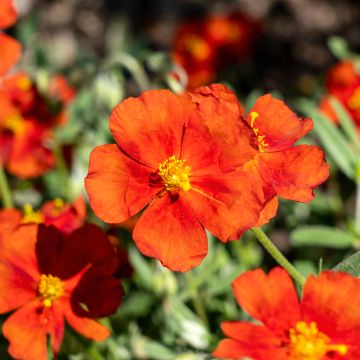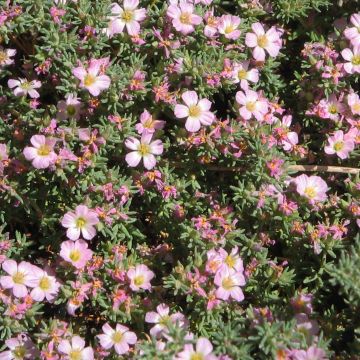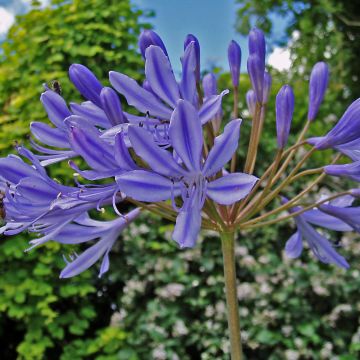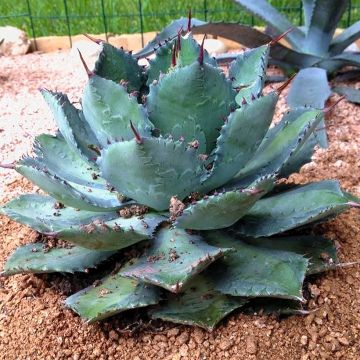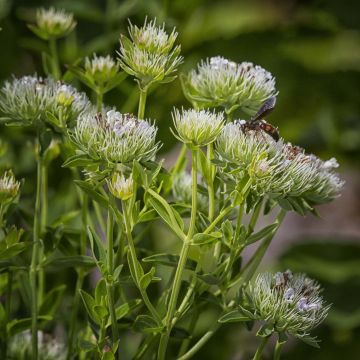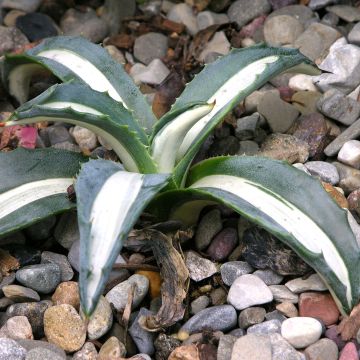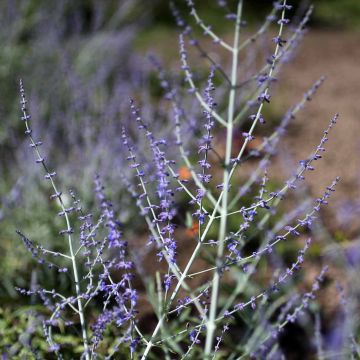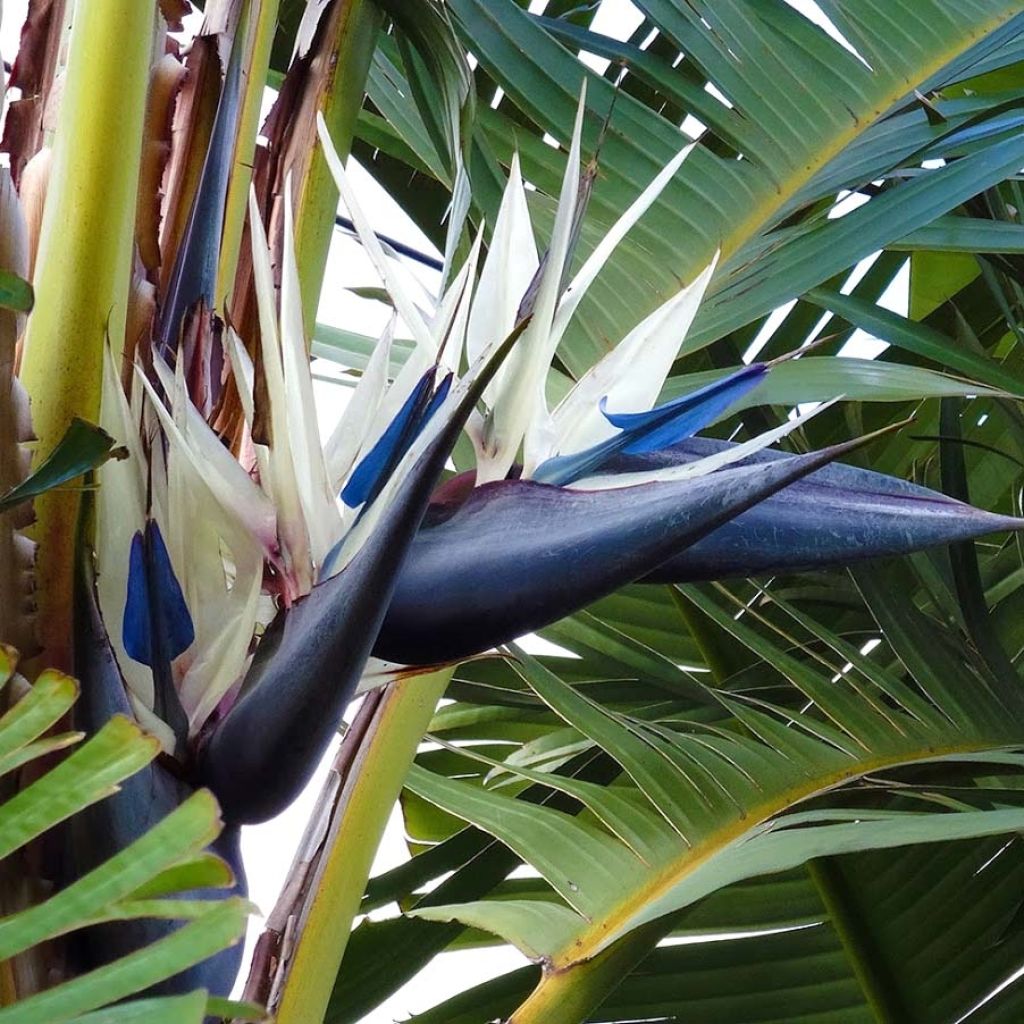

Strelitzia nicolai
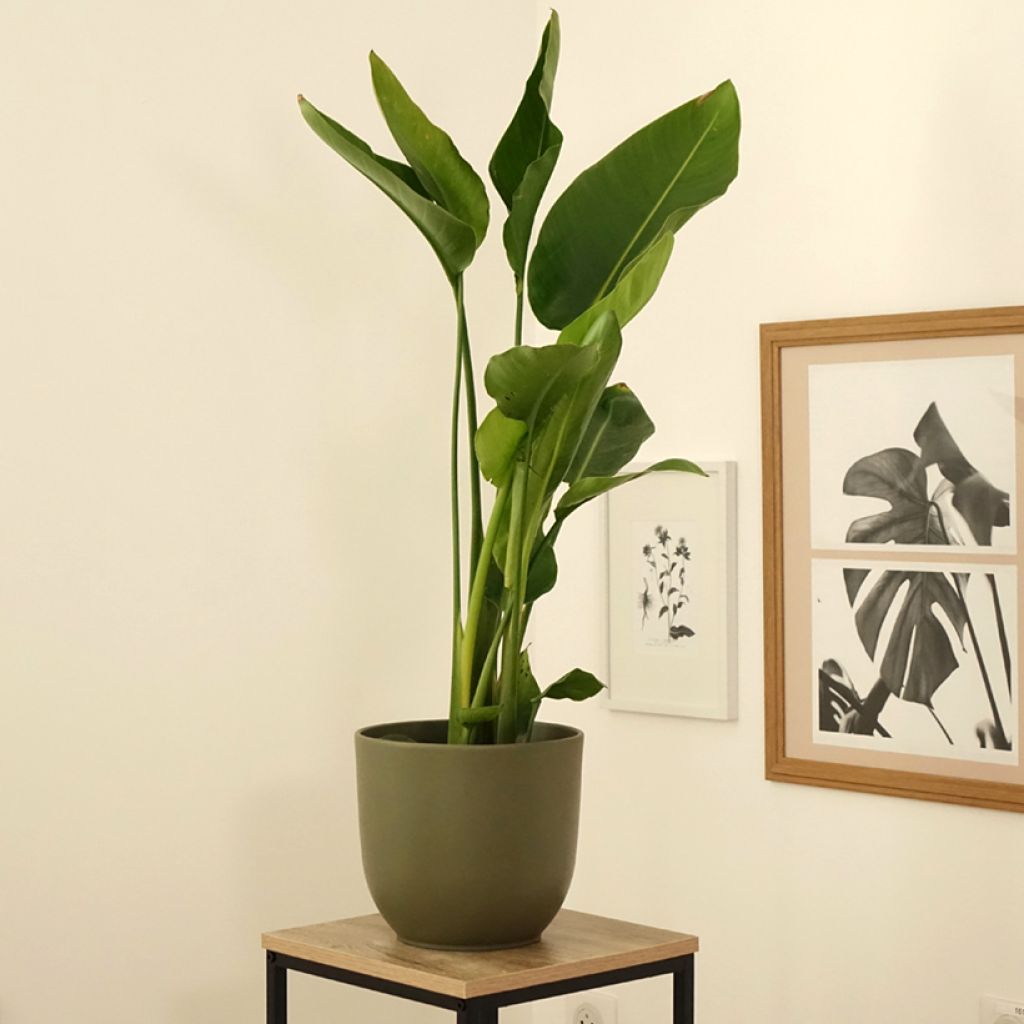

Strelitzia nicolai
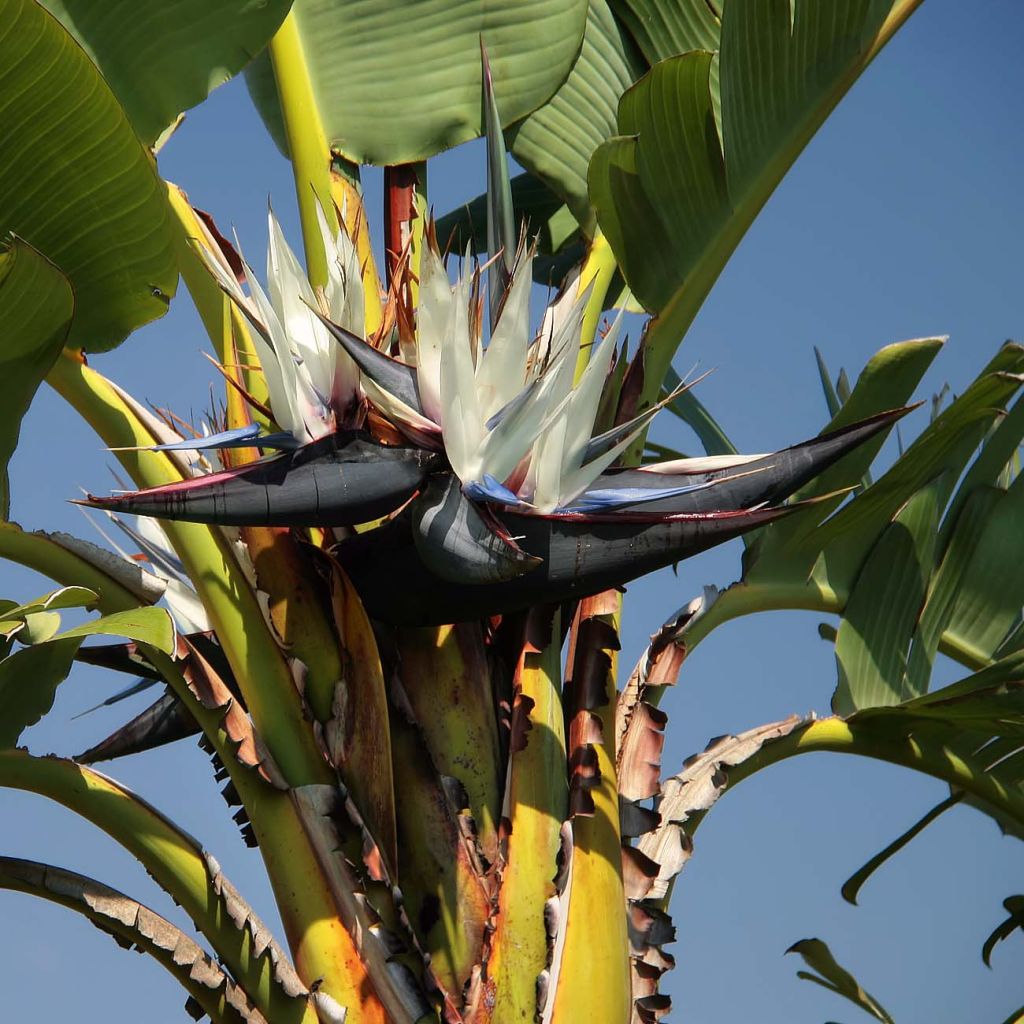

Strelitzia nicolai - Oiseau de Paradis blanc, géant.
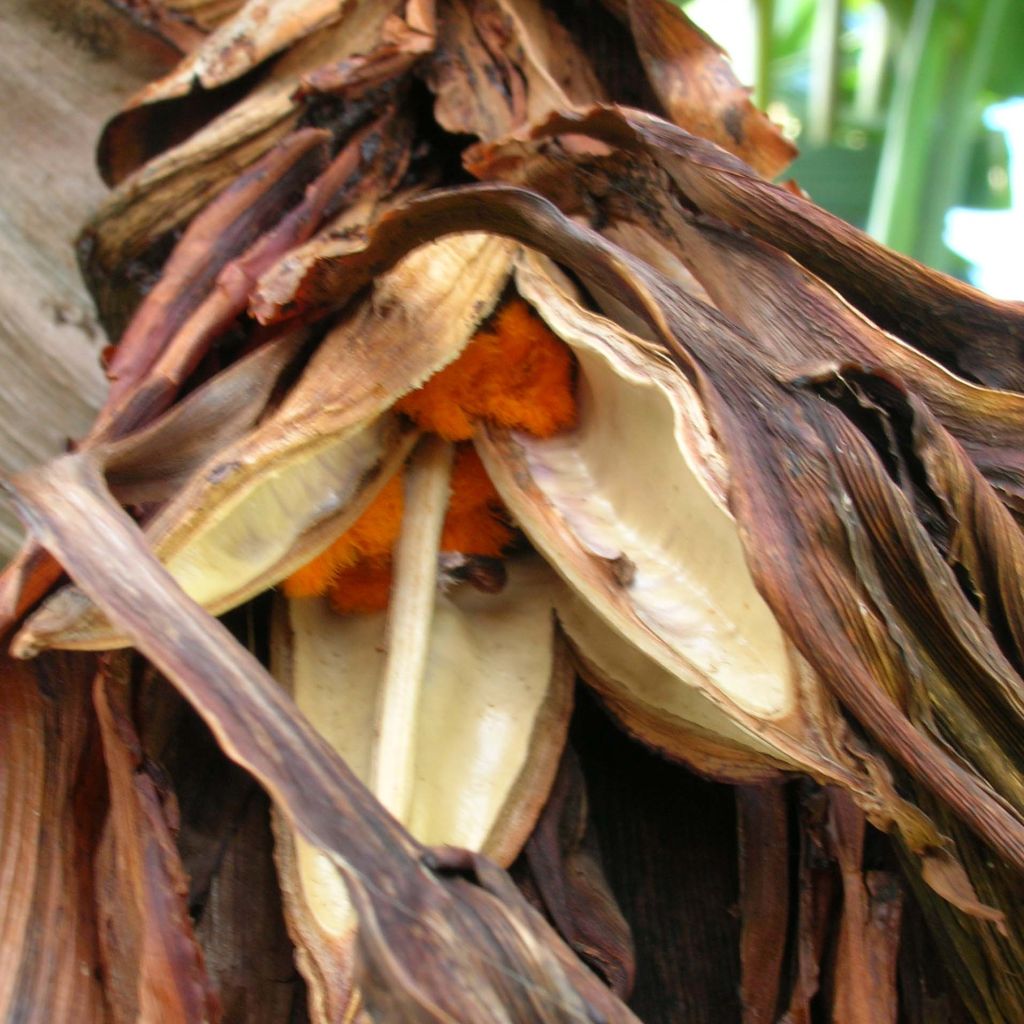

Strelitzia nicolai - Oiseau de Paradis blanc, géant.
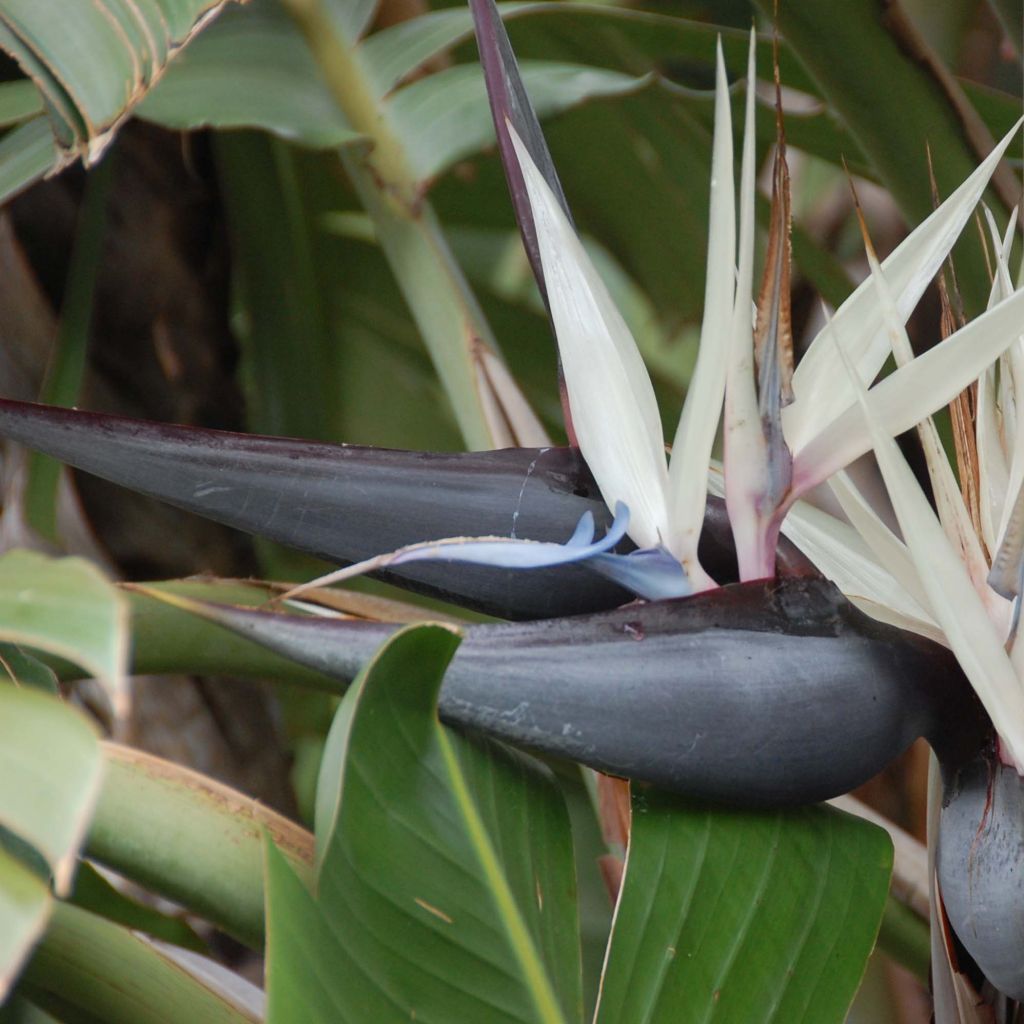

Strelitzia nicolai - Oiseau de Paradis blanc, géant.
Strelitzia nicolai
Strelitzia nicolai
Giant White Bird of Paradise, Wild Banana
Very poor condition
NS, 01/01/2024
Special offer!
Receive a €20 voucher for any order over €90 (excluding delivery costs, credit notes, and plastic-free options)!
1- Add your favorite plants to your cart.
2- Once you have reached €90, confirm your order (you can even choose the delivery date!).
3- As soon as your order is shipped, you will receive an email containing your voucher code, valid for 3 months (90 days).
Your voucher is unique and can only be used once, for any order with a minimum value of €20, excluding delivery costs.
Can be combined with other current offers, non-divisible and non-refundable.
Home or relay delivery (depending on size and destination)
Schedule delivery date,
and select date in basket
This plant carries a 12 months recovery warranty
More information
We guarantee the quality of our plants for a full growing cycle, and will replace at our expense any plant that fails to recover under normal climatic and planting conditions.
Would this plant suit my garden?
Set up your Plantfit profile →
Description
Strelizia nicolai is a giant white bird of paradise, also known as the False traveler's tree (Ravenala madagascariensis), due to certain similarities in their appearance. This giant perennial plant is closely related to the Strelitzia reginae but even more spectacular. It develops several false trunks with tough leaves that resemble those of banana trees, arranged in a fan shape. The flowers resemble the bird of paradise but are white with dark blue bracts. Grow this amazing tropical plant in a very large pot in a very bright room or on the terrace, and store it indoors during frost.
Strelitzia nicolai belongs to the Strelitziaceae family, which consists of 5 known species, all native to clearings and riverbanks along South African rivers. This evergreen rhizomatous perennial plant can reach 8m (26ft) high in open ground and spreads laterally by producing shoots over 3m (10ft) long. In pots, it will rarely exceed 2.5m (8ft) high and 1m (3ft) wide at the base. False trunks (stipes) emerge from the rhizomes, formed by the sheaths of overlapping leaf stalks. At the top of each stipe, large fans composed of long-stalked leaves unfold in 2 rows. They measure 2m (7ft) long, including the stalk, and 60cm (0 and 24in) wide. Their leaves are strongly marked by secondary veins and often laterally split, like those of banana trees, dark greenish-grey and satin-like, sometimes with a purplish-tinged midline. Flowering occurs from June to September. Rising from the axils of the leaves, large, dark blue-grey bracts tinged with violet, emerge from the flowers with long white sepals and bright blue petals. Their structure is like exotic bird heads. The flowers are followed by reddish capsules containing seeds.
In floristry, the Strelitzia is the ultimate exotic cut flower, due to its extraordinary structure and beautiful harmony of colours, rare in the plant world. It is also a very beautiful conservatory plant, which only dislikes cold and is easy to grow as long as it has enough space, water, and nutrients during the growing period. It is easy to create an exotic setting around the Strelitzia, by combining it with cannas, castor oil plants, Melianthus major, Billbergia nutans, a small banana tree, gingers, and a small palm tree such as the Sabal minor, for example.
Report an error about the product description
Strelitzia nicolai in pictures
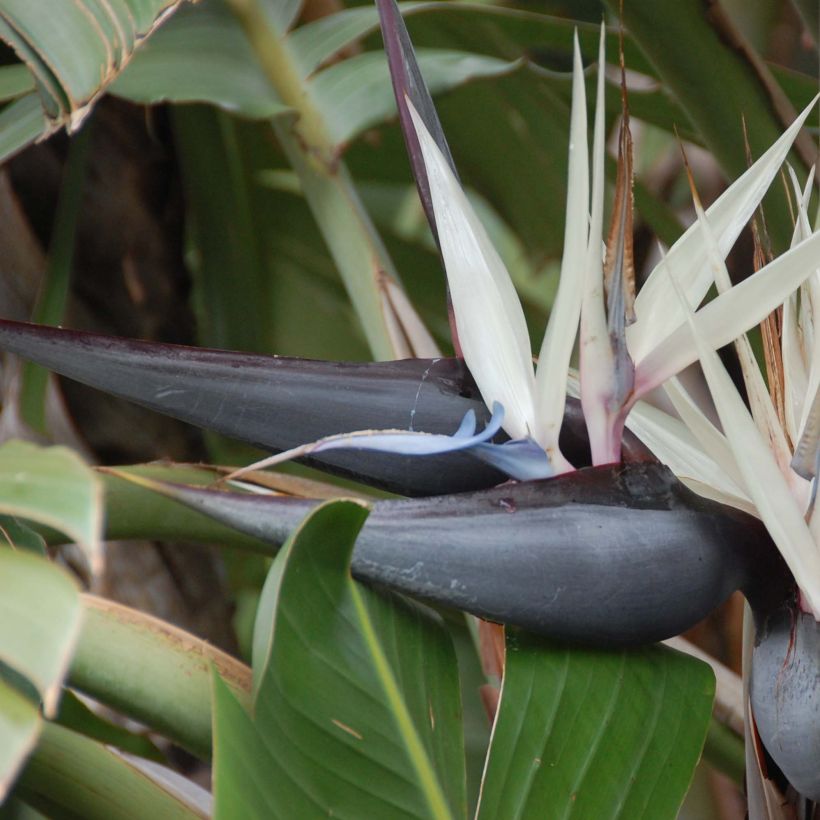

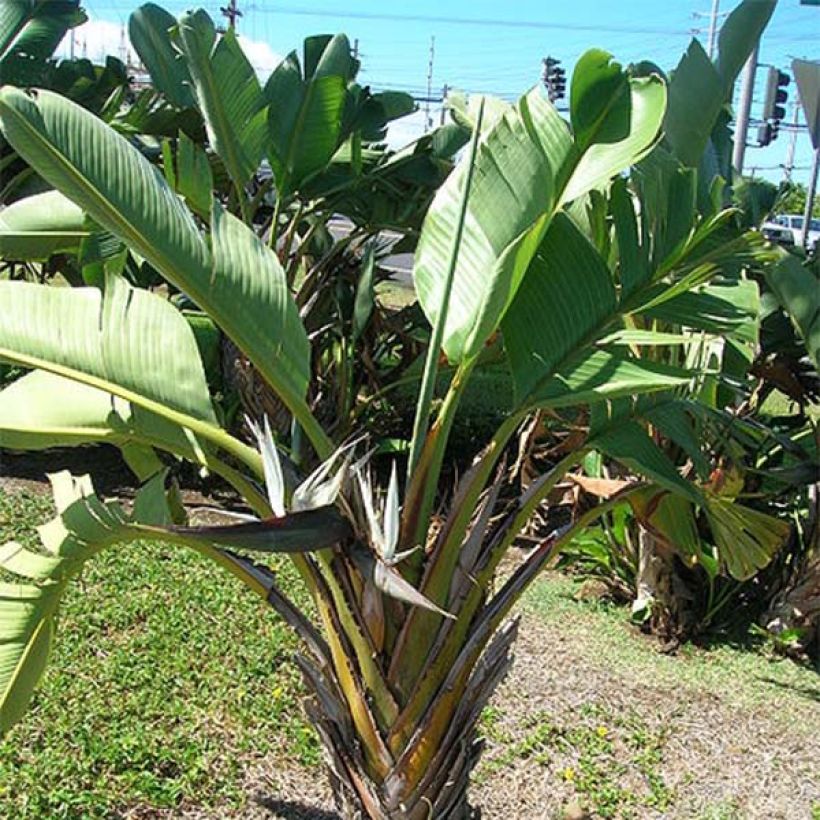

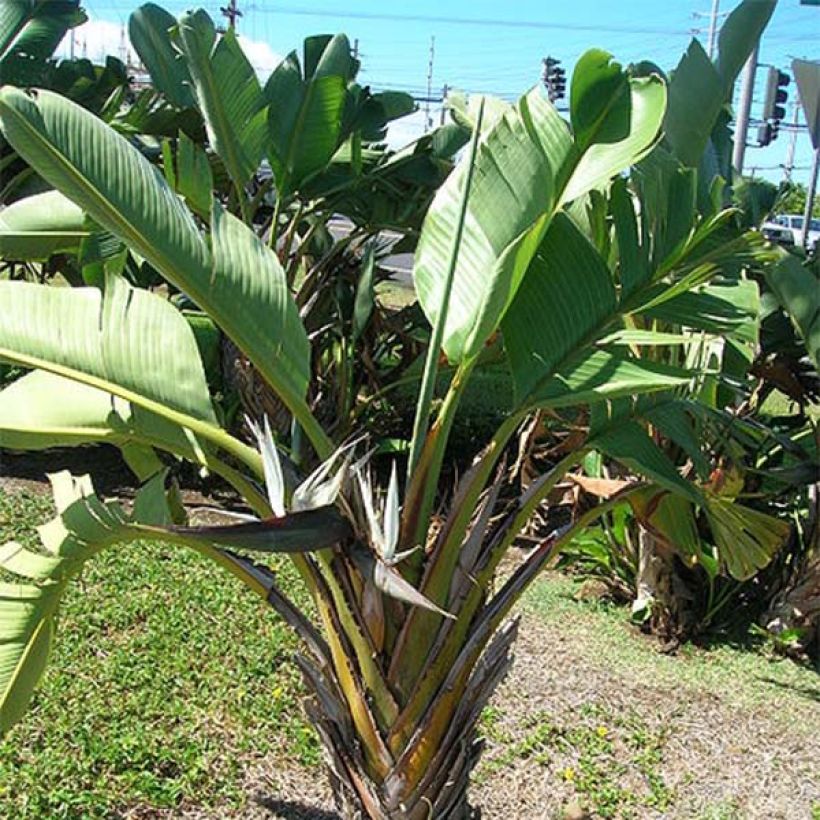

Flowering
Foliage
Plant habit
Botanical data
Strelitzia
nicolai
Strelitziaceae
Giant White Bird of Paradise, Wild Banana
South Africa
Planting and care
Strelitzia is a tropical, tender plant that can tolerate a few short, light frosts (-2°C (28.4°F)) if the soil is well-drained. However, it can only be grown in open ground in the most sheltered gardens in the mildest regions. Fortunately, it is easy to grow in pots, which allows the plant to be stored frost-free in winter, in a bright, minimally heated and well-ventilated room, provided you have enough space for when the plant reaches its adult size. Plant it in fertile soil which is rich in organic matter and moist throughout the growing period but well-drained and sheltered from the coldest winds. Place your bird of paradise in full sun, preferably facing south, or possibly partial shade in a hot climate.
In winter surround the plant with fleece to gain a few precious degrees, and cover the base with a thick mulch if grown in open ground. Watering should be regular and plentiful in summer, less in winter.
Pot cultivation:
Use a large pot with drainage holes. Add a layer of 5cm (2in) of clay balls or pottery shards to help drainage. Use a mixture of compost and potting soil, and place your pot in a very bright room, not too warm in winter. A few hours of direct sunlight per day are essential to induce flowering but beware of the harsh midday sun behind glass. Filter the light to prevent foliage burn. Take your plant outside from May to September.
Water regularly during the growing season, but allow the substrate to dry on the top 3cm (1in) before watering again. Never allow water to stagnate in the saucer. During the resting period, place the plant in a bright and cool room (around 13°C (55.4°F)) and water sparingly.
A very large plant that cannot be repotted will benefit from a top dressing of compost once a year in spring.
Propagation: division of the stumps is done in spring by taking a portion of rhizome with roots and a dormant bud (an eye).
Planting period
Intended location
Care
Planting & care advice
-
, onOrder confirmed
Reply from on Promesse de fleurs
Similar products
Haven't found what you were looking for?
Hardiness is the lowest winter temperature a plant can endure without suffering serious damage or even dying. However, hardiness is affected by location (a sheltered area, such as a patio), protection (winter cover) and soil type (hardiness is improved by well-drained soil).

Photo Sharing Terms & Conditions
In order to encourage gardeners to interact and share their experiences, Promesse de fleurs offers various media enabling content to be uploaded onto its Site - in particular via the ‘Photo sharing’ module.
The User agrees to refrain from:
- Posting any content that is illegal, prejudicial, insulting, racist, inciteful to hatred, revisionist, contrary to public decency, that infringes on privacy or on the privacy rights of third parties, in particular the publicity rights of persons and goods, intellectual property rights, or the right to privacy.
- Submitting content on behalf of a third party;
- Impersonate the identity of a third party and/or publish any personal information about a third party;
In general, the User undertakes to refrain from any unethical behaviour.
All Content (in particular text, comments, files, images, photos, videos, creative works, etc.), which may be subject to property or intellectual property rights, image or other private rights, shall remain the property of the User, subject to the limited rights granted by the terms of the licence granted by Promesse de fleurs as stated below. Users are at liberty to publish or not to publish such Content on the Site, notably via the ‘Photo Sharing’ facility, and accept that this Content shall be made public and freely accessible, notably on the Internet.
Users further acknowledge, undertake to have ,and guarantee that they hold all necessary rights and permissions to publish such material on the Site, in particular with regard to the legislation in force pertaining to any privacy, property, intellectual property, image, or contractual rights, or rights of any other nature. By publishing such Content on the Site, Users acknowledge accepting full liability as publishers of the Content within the meaning of the law, and grant Promesse de fleurs, free of charge, an inclusive, worldwide licence for the said Content for the entire duration of its publication, including all reproduction, representation, up/downloading, displaying, performing, transmission, and storage rights.
Users also grant permission for their name to be linked to the Content and accept that this link may not always be made available.
By engaging in posting material, Users consent to their Content becoming automatically accessible on the Internet, in particular on other sites and/or blogs and/or web pages of the Promesse de fleurs site, including in particular social pages and the Promesse de fleurs catalogue.
Users may secure the removal of entrusted content free of charge by issuing a simple request via our contact form.
The flowering period indicated on our website applies to countries and regions located in USDA zone 8 (France, the United Kingdom, Ireland, the Netherlands, etc.)
It will vary according to where you live:
- In zones 9 to 10 (Italy, Spain, Greece, etc.), flowering will occur about 2 to 4 weeks earlier.
- In zones 6 to 7 (Germany, Poland, Slovenia, and lower mountainous regions), flowering will be delayed by 2 to 3 weeks.
- In zone 5 (Central Europe, Scandinavia), blooming will be delayed by 3 to 5 weeks.
In temperate climates, pruning of spring-flowering shrubs (forsythia, spireas, etc.) should be done just after flowering.
Pruning of summer-flowering shrubs (Indian Lilac, Perovskia, etc.) can be done in winter or spring.
In cold regions as well as with frost-sensitive plants, avoid pruning too early when severe frosts may still occur.
The planting period indicated on our website applies to countries and regions located in USDA zone 8 (France, United Kingdom, Ireland, Netherlands).
It will vary according to where you live:
- In Mediterranean zones (Marseille, Madrid, Milan, etc.), autumn and winter are the best planting periods.
- In continental zones (Strasbourg, Munich, Vienna, etc.), delay planting by 2 to 3 weeks in spring and bring it forward by 2 to 4 weeks in autumn.
- In mountainous regions (the Alps, Pyrenees, Carpathians, etc.), it is best to plant in late spring (May-June) or late summer (August-September).
The harvesting period indicated on our website applies to countries and regions in USDA zone 8 (France, England, Ireland, the Netherlands).
In colder areas (Scandinavia, Poland, Austria...) fruit and vegetable harvests are likely to be delayed by 3-4 weeks.
In warmer areas (Italy, Spain, Greece, etc.), harvesting will probably take place earlier, depending on weather conditions.
The sowing periods indicated on our website apply to countries and regions within USDA Zone 8 (France, UK, Ireland, Netherlands).
In colder areas (Scandinavia, Poland, Austria...), delay any outdoor sowing by 3-4 weeks, or sow under glass.
In warmer climes (Italy, Spain, Greece, etc.), bring outdoor sowing forward by a few weeks.










































